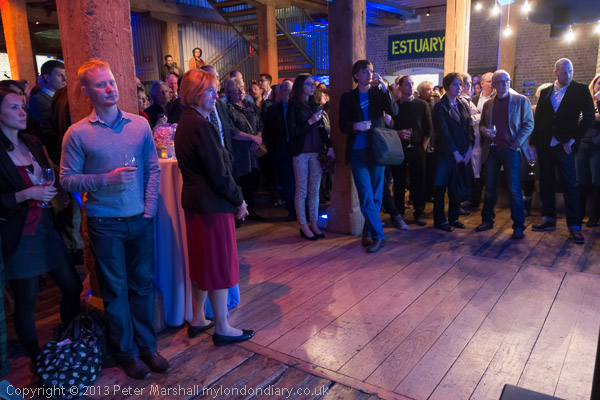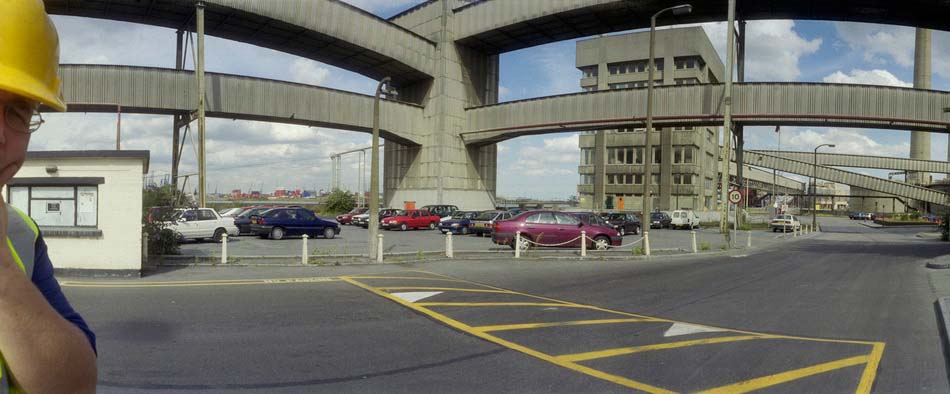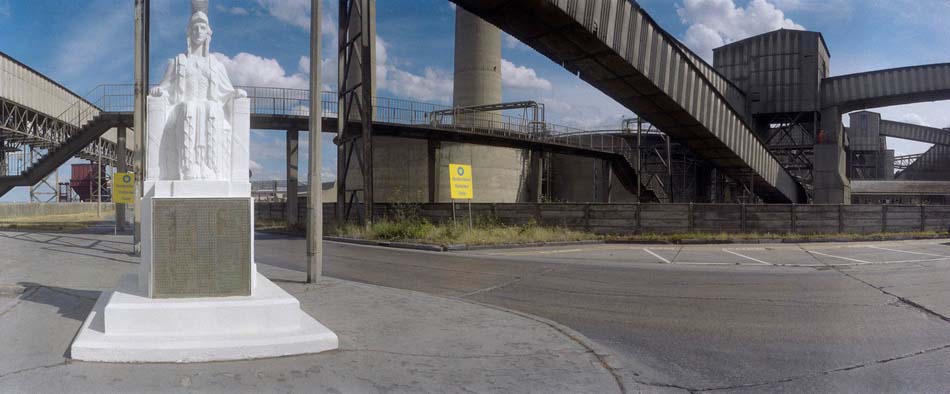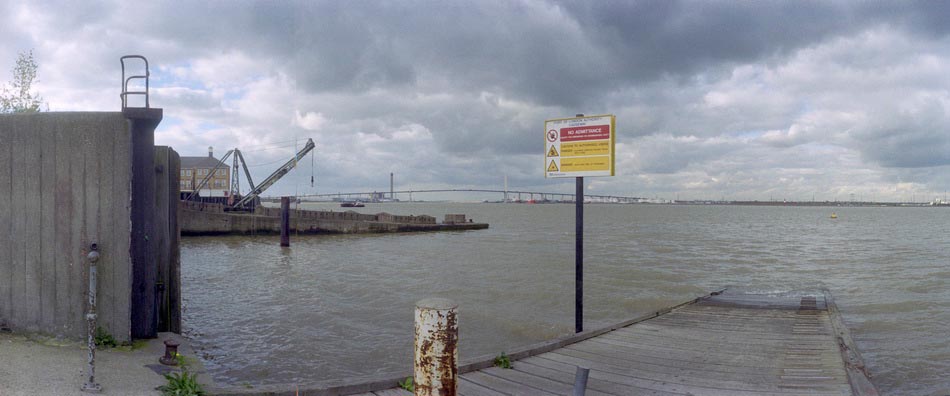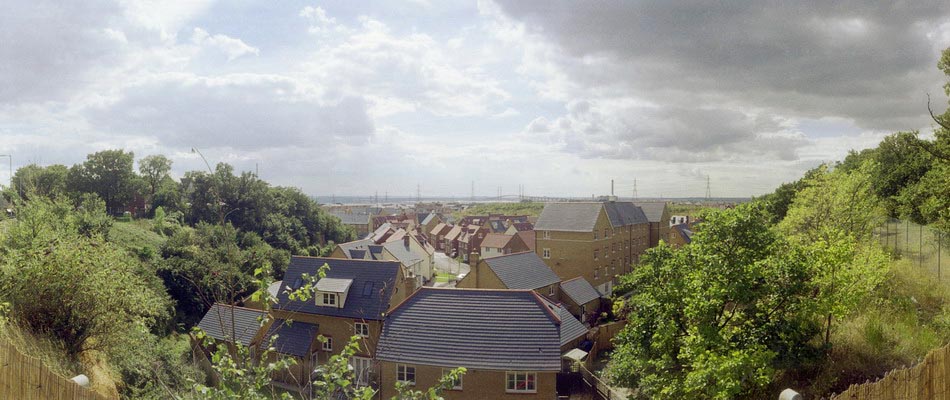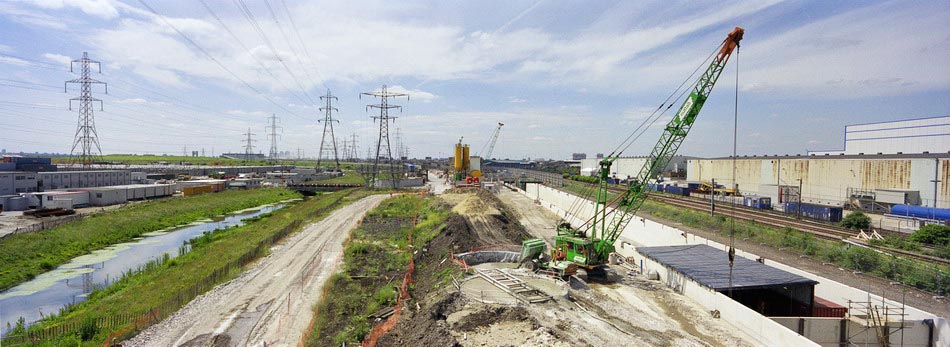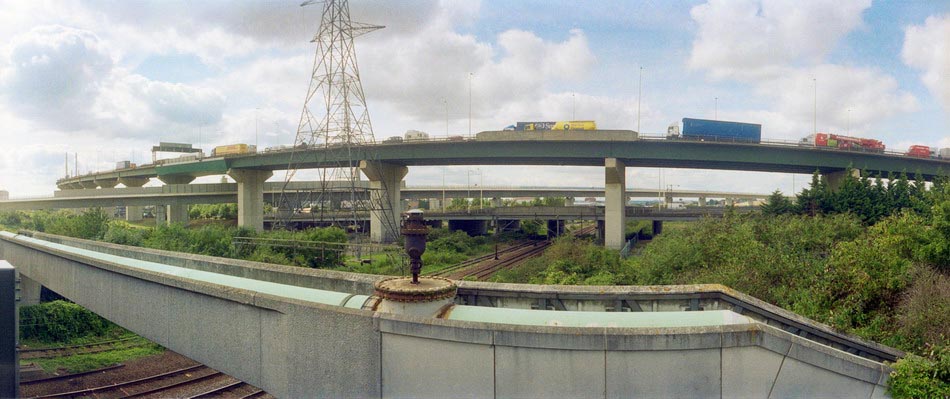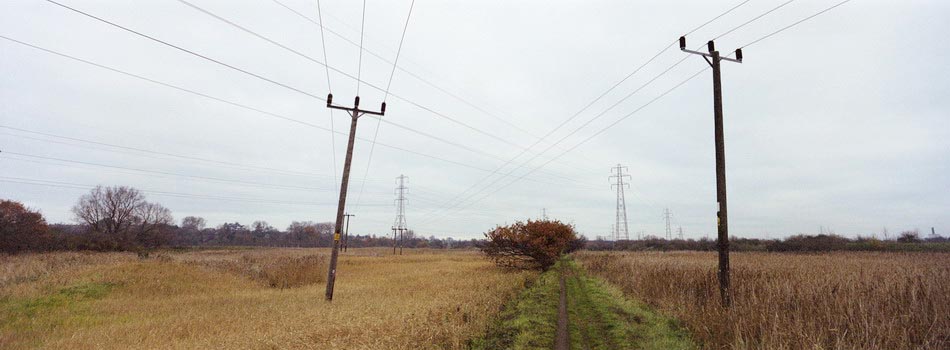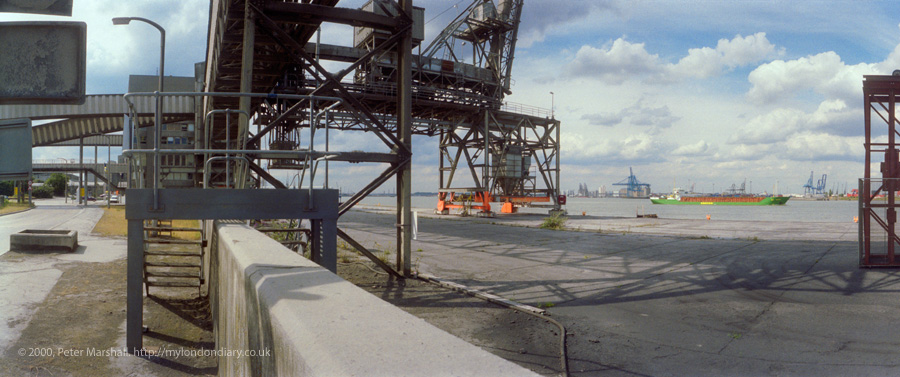More Colour From New Charlton: I think all of these pictures were taken in May 1995, the panoramic examples being made using a swing lens panoramic camera, probably the Horizon 202 from the Krasnogorsky Mechanicheskiy Zavod (KMZ) factory in Krasnogorsk near Moscow. This uses clockwork to rotate a 28mm f2.8 lens around a little over 120 degrees, keeping the lens to film distance constant by having the film in a curve around the axis of rotation. The camera made negatives 58mm long and 24mm tall on normal 35mm film, giving around 20 exposures from a normal ’36 exposure’ cassette.
The film was exposed though a rotating slit behind the lens and different shutter speeds were obtained by altering the slit width. There were only two rotation speeds and for the faster speeds – 1/60 s, 1/125 s, and 1/250 s – the rotation took around a thirtieth of a second, enabling me to use the camera without a tripod.
The lens focus was fixed and I think I usually worked at f8 which meant everything from a few metres away to infinity was sharp. The camera had a spirit level as by keeping the camera level vertical lines were rendered straight in the image. Horizontal lines away from the centre of the image become curved as you can see in some of these images, and care in composition was needed to stop these effects dominating the pictures.
The image quality was much the same as that from my several times more expensive Japanese Widelux f8 swing lens camera, but the Horizon had a useable viewfinder and was easier to use handheld. Though I think for most of my walks back in 1995 I was still carrying a rather large, heavy and solid Manfrotto tripod. I liked it because it could hold the camera absolutely steady at my eye level – and unless there was good reason not to do so I always preferred to view from that height.
But I was also photographing with more conventional cameras, and usually had two Olympus OM4 bodies, one with black and white and the other with colour negative film. Although I had a fairly full range of lenses, the great majority of the pictures were made using an Olympus 35mm shift lens.
In particular this allowed me to place the horizon in the images below or above the centre of the frame without tilting the camera which would have resulted in converging or diverging verticals. As well as shifting the optical elements up and down the lens mount allowed the lens to move to either side which also gave more control over framing.
This area beside the Thames was then almost entirely industrial with aggregate wharves and some commercial premises. On other occasions I took more pictures along the riverside path which in the following year became a part of the Thames Path.
Flickr – Facebook – My London Diary – Hull Photos – Lea Valley – Paris
London’s Industrial Heritage – London Photos
All photographs on this page are copyright © Peter Marshall.
Contact me to buy prints or licence to reproduce.






